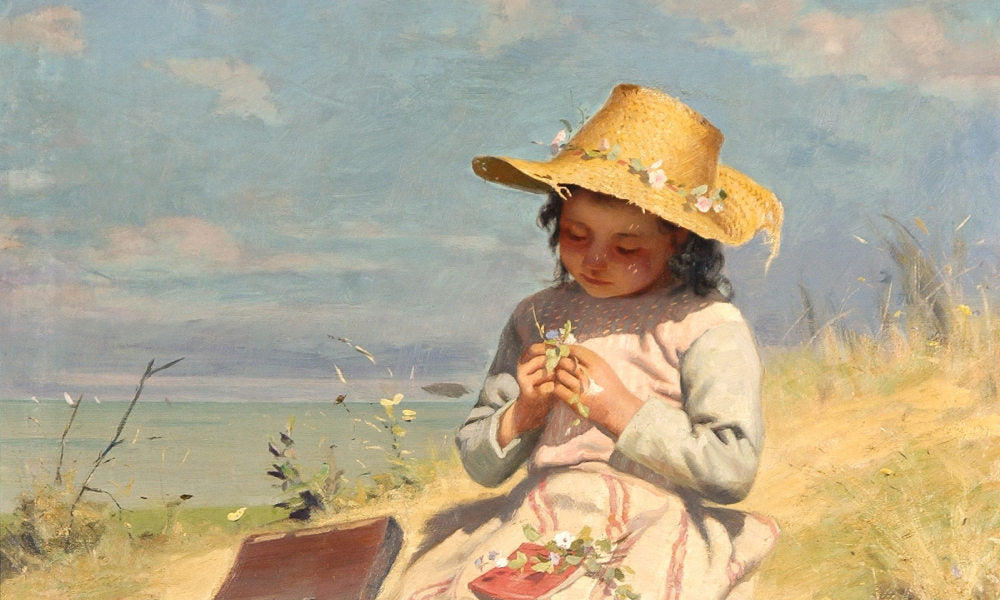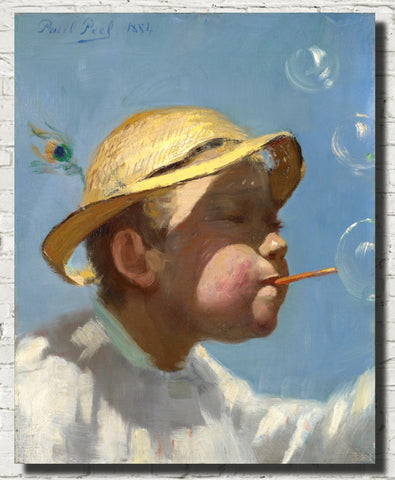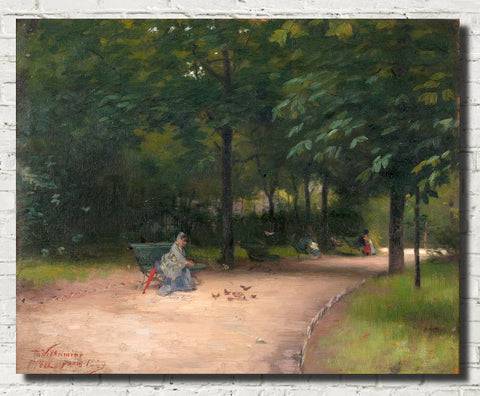Table of Contents:[hide]
Nestled within the annals of art history is a luminary whose brushstrokes breathed life into canvases, leaving an indelible mark on the world of fine arts. Paul Peel, a Canadian painter born in 1860, transcended the boundaries of time with his exquisite creations. This blog delves into the intricate tapestry of Paul Peel's life and artistry, exploring the nuances of his masterpieces that continue to captivate art enthusiasts globally.
Early Years and Influences
Childhood Sparks:
Born in London, Ontario, Paul Peel manifested an early affinity for art. His childhood was infused with creativity, a harbinger of the artistic prodigy that would emerge.
Academic Pursuits:
Peel's journey into the art world took a formal turn when he enrolled at the Pennsylvania Academy of the Fine Arts. Immersed in the academic milieu, he honed his skills under the tutelage of renowned artists, setting the stage for his future brilliance.
Artistic Style and Themes
Realism Unveiled:
Paul Peel's oeuvre predominantly embraced realism. His keen eye for detail and the ability to capture the essence of his subjects imbued his paintings with a lifelike quality that transcended mere representation.
Portraiture and Allegory:
Peel's works often oscillated between portraiture and allegory, creating a harmonious blend that elevated the emotional impact of his art. His subjects, whether individuals or symbolic representations, were brought to life with a finesse that mirrored his artistic prowess.
Theatrical Elements:
The influence of theatrical elements is unmistakable in Peel's work. Dramatic lighting and meticulous composition lent a theatrical flair to his paintings, intensifying the emotional connection between the viewer and the artwork.
Key Masterpieces
The Young Biologist:
One of Peel's iconic masterpieces, "The Young Biologist," encapsulates his ability to infuse narrative into his work. The painting portrays a young boy engrossed in the study of nature, symbolizing the intersection of curiosity and innocence.
Bubble Boy
an 1884 painting by Canadian artist Paul Peel, captures a poignant moment of childhood innocence. The artwork portrays a young boy in a straw hat joyfully blowing bubbles, encapsulating the fleeting nature of youth and carefree moments. Peel's post-impressionist style beautifully conveys the boy's delight, while the title adds a layer of complexity, hinting at themes of isolation and vulnerability. The interplay of light and shadow enhances the emotional depth, making "Bubble Boy" a timeless reflection on the beauty and transience of childhood, inviting viewers to connect with the universal experience of youthful exuberance.
Feeding the Birds in the Park
a masterpiece by Canadian artist Paul Peel, unveils a tranquil scene resonant with warmth and connection. Painted in the 19th century, Peel skillfully captures a moment of serenity as a mother and child share the simple joy of feeding birds in a lush park setting. The soft hues and meticulous details evoke a sense of tenderness, emphasizing familial bonds and the harmony between humanity and nature. Peel's ability to infuse everyday scenes with emotional depth makes "Feeding the Birds in the Park" a timeless celebration of familial love and the beauty found in life's quiet, shared moments.
Legacy and Impact
International Recognition:
Paul Peel's artistic brilliance transcended borders, earning him international acclaim. His works were showcased in major exhibitions, solidifying his position as a prominent figure in the art world.
Influence on Canadian Art:
Peel's legacy reverberates within Canadian art circles, influencing subsequent generations of artists. His commitment to realism and thematic diversity set a precedent for Canadian painters seeking to make their mark on the global stage.
FAQs
Q: What was Paul Peel's preferred medium?
A: Peel primarily worked with oil on canvas. His choice of medium allowed him to achieve the rich textures and nuanced details that characterize his paintings.
Q: Did Peel receive formal art education?
A: Yes, Peel attended the Pennsylvania Academy of the Fine Arts, where he refined his artistic skills under the guidance of established artists.
Q: How did Peel's upbringing influence his art?
A: Peel's childhood, steeped in creativity, laid the foundation for his artistic journey. The early exposure to art and a supportive environment nurtured his innate talent.
Q: What themes did Peel often explore in his paintings?
A: Peel's works often explored themes of realism, portraiture, and allegory. His paintings frequently depicted the human form, capturing emotions and narratives with meticulous detail.
Q: How did Peel's international recognition impact his career?
A: Peel's international acclaim expanded the reach of his art. It opened doors to major exhibitions and secured his position as a noteworthy artist on the global stage.
Conclusion
Paul Peel's artistic odyssey was a symphony of creativity, woven with threads of realism, portraiture, and allegory. His legacy endures through masterpieces that transcend time, inviting viewers into a world where brushstrokes speak volumes. Peel's life and art continue to inspire, reminding us of the profound impact a single individual can have on the canvas of history.
See a curated collection of Paul Peel artworks : Paul Peel Prints and Canvas Panels




